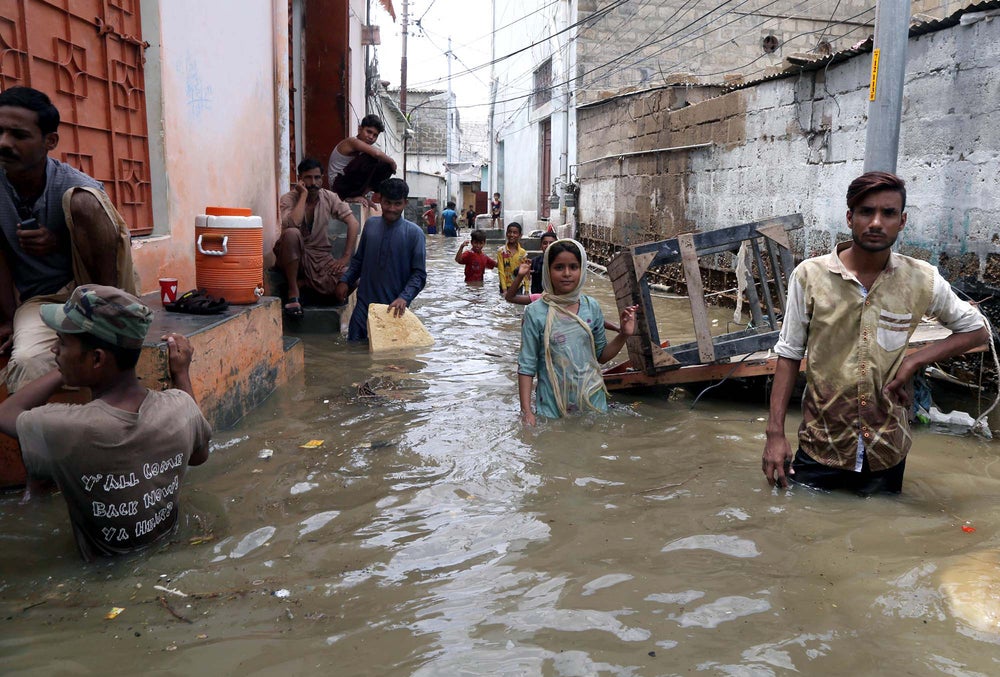
Pakistan is experiencing a record monsoon season that has displaced at least 30 million people. More than four million Bangladeshis were displaced by what has been called the worst flooding the country has seen in a century. In neighbouring India, the Ganges is above the danger mark in at least five locations and more than 16,000 evacuees have been housed in relief camps. South Asia is suffering from natural disasters exacerbated by climate change.
The devastation is not unprecedented, nor is it about to go away. Energy Monitor’s weekly data shows that out of the top ten countries most affected by climate and weather-related disasters in the past decade, four were in South Asia.

Discover B2B Marketing That Performs
Combine business intelligence and editorial excellence to reach engaged professionals across 36 leading media platforms.
Despite their evident vulnerabilities to climate change, countries in South Asia have made little progress on decarbonisation. Coal, oil and gas make up at least 80% of the energy mix in the region’s major economies: Bangladesh, India, Pakistan and Sri Lanka.
Moreover, an energy crisis is peeking round the corner – Pakistan, for example, has been forced to cut electricity to households as procuring liquified natural gas (LNG) has become too expensive. S&P Global reports on a significant electricity crunch, with around 14 power plants with a combined capacity of 7GW offline due to fuel shortages. In autumn 2021, Bangladesh underwent a similar experience when Dhaka cancelled an LNG import tender over unbearably high prices for the country.
So far, despite its fossil fuel dependency, South Asia remains a rather small contributor to global greenhouse gas emissions. In total, the region contributed 9.3% of global emissions in 2019, with India alone responsible for 7.3%.
However, the region is likely to become more important for global climate action as its population is set to soar. South Asia is home to a quarter of the world’s people. India is set to displace China as the most populous country on Earth as soon as 2023 and the population of South Asia is set to grow by half a billion people in just 30 years.

US Tariffs are shifting - will you react or anticipate?
Don’t let policy changes catch you off guard. Stay proactive with real-time data and expert analysis.
By GlobalDataSouth Asia’s vulnerability to climate change and extreme weather events is enhanced in poorer regions. A Global Climate Risk Index from NGO Germanwatch shows that while monetary losses observed in richer countries are higher, the loss of life and existential threat of climate change is much more prevalent in low-income countries.
Here is where international climate finance comes into play. India has been the biggest recipient of climate finance, according to the Climate Funds Update, an independent website providing information on multilateral climate finance initiatives, with Bangladesh coming fourth.
Yet the funds disbursed are often not on par with what climate change requires financially. Most of climate finance in India comes from domestic sources and is far from what is needed for New Delhi to reach its climate targets under the Paris Agreement, according to a report by analysis and advisory organisation the Climate Policy Initiative.
Pakistan, due to its comparatively small contribution to global emissions, is now calling for reparations from the rich countries that are mainly to blame for climate change.





